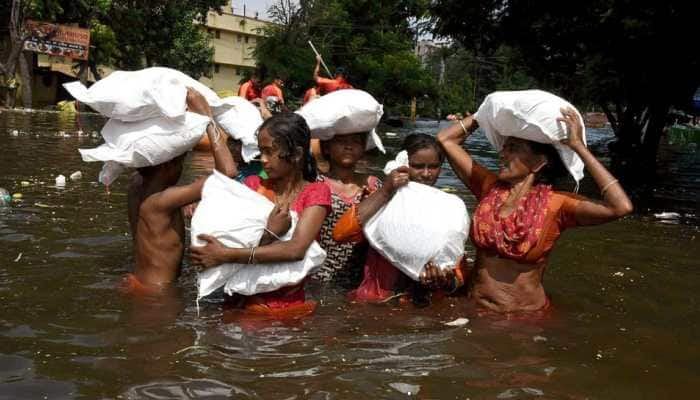Is solar power the real solution to India's energy crisis?
India unfolded a much hyped 'Solar Alliance' on the sidelines of the climate change conference in Paris. A grand invitation extended to the 121 sunny nations to come together for making solar power accessible, its headquarters in Gurgaon and the Indian government seeks to inject Rs 400 crores as seed money.
Trending Photos
)
New Delhi: India unfolded a much hyped 'Solar Alliance' on the sidelines of the climate change conference in Paris. A grand invitation extended to the 121 sunny nations to come together for making solar power accessible, its headquarters in Gurgaon and the Indian government seeks to inject Rs 400 crores as seed money.
Now an impression has been created that solar power could be the panacea for solving all issues related to climate change and energy independence for India. This is far from the truth. Since despite the aggressive international marketing even for India during the next 4-5 decades 'coal will still be the king'! Today about 60 per cent of India's power is generated using hydrocarbons.
There is no doubt that India loves the sun god and the country as a whole is bestowed with more than 300 sunny days which makes it a very attractive option to generate electricity. However, there is still a huge catch: the sun is available only for half a day and hence excessive over reliance on solar power can be very hazardous during darkness.
Today the country plans to ramp up its solar power generating capacity to 100,000 MW by 2022, an almost 25-fold increase from 4000 MW of installed capacity in 2015. This means every year India will have to install about 14,000 MW of solar power continuously for the next 7 years if this ambitious 100 gigawatt target has to be achieved. What is the past record of accomplishment, in the last 5 years India put up only about 2000 MW of installed solar power.
Several bottlenecks still need to be overcome in harnessing solar power for generating electricity. Today even the best of the best commercially available solar photo voltaic cells give and efficiency less than 20 per cent which is a relatively poor conversion ratio and it is for this reason that solar cells have to have large surface areas. This when translated means very large tracts of land area would get covered with solar panels if the equivalent of 100,000 MW has to be generated.
The other and bigger bottleneck is the need for storage of generated power. Since solar panels are no good when there is no sunlight like say at night or during the heavy clouds that cover the sky during the monsoons, in these non-sunny hours the generated electricity needs to be stored in batteries, which can then supply power.
Today's batteries are really very expensive, and life span is relatively short and trying to deploy them on gigawatt capacities is no joke. For solar power to make a big inroad, a huge breakthrough needs to be made in battery technology. There used to be a promise of plastic batteries that kind of fizzled out last century.
Hopefully this new 'Breakthrough Energy Coalition' announced by Microsoft founder Bill Gates along with 28 super rich investors could spur research and development in making cheap, durable, light weight and long lasting re-chargeable batteries. Until then the reliance on good old Lead Acid batteries will be the mainstay for industrial scale applications.
Assuming that efficiencies of solar cells and batteries are kind of resolved with great investments in research the literally unresolvable issue that solar power is an intermittent source is never going to fade away, available during daylight and off during night this makes it intermittent. There is certain base load of power that is always required whether it is day or night and that will always have to be met with non-renewable energy sources.
This base power is that load which is required to be available 100 percent of the times irrespective of whether the sun is shining or not, the wind is blowing or not. As of today, there are only two reliable sources of meeting the base loads, good old coal and gas both of which give out that climate villain called carbon dioxide and the other gorilla called atomic energy.
Stay informed on all the latest news, real-time breaking news updates, and follow all the important headlines in india news and world News on Zee News.
Live Tv







)
)
)
)
)
)
)
)
)
)
